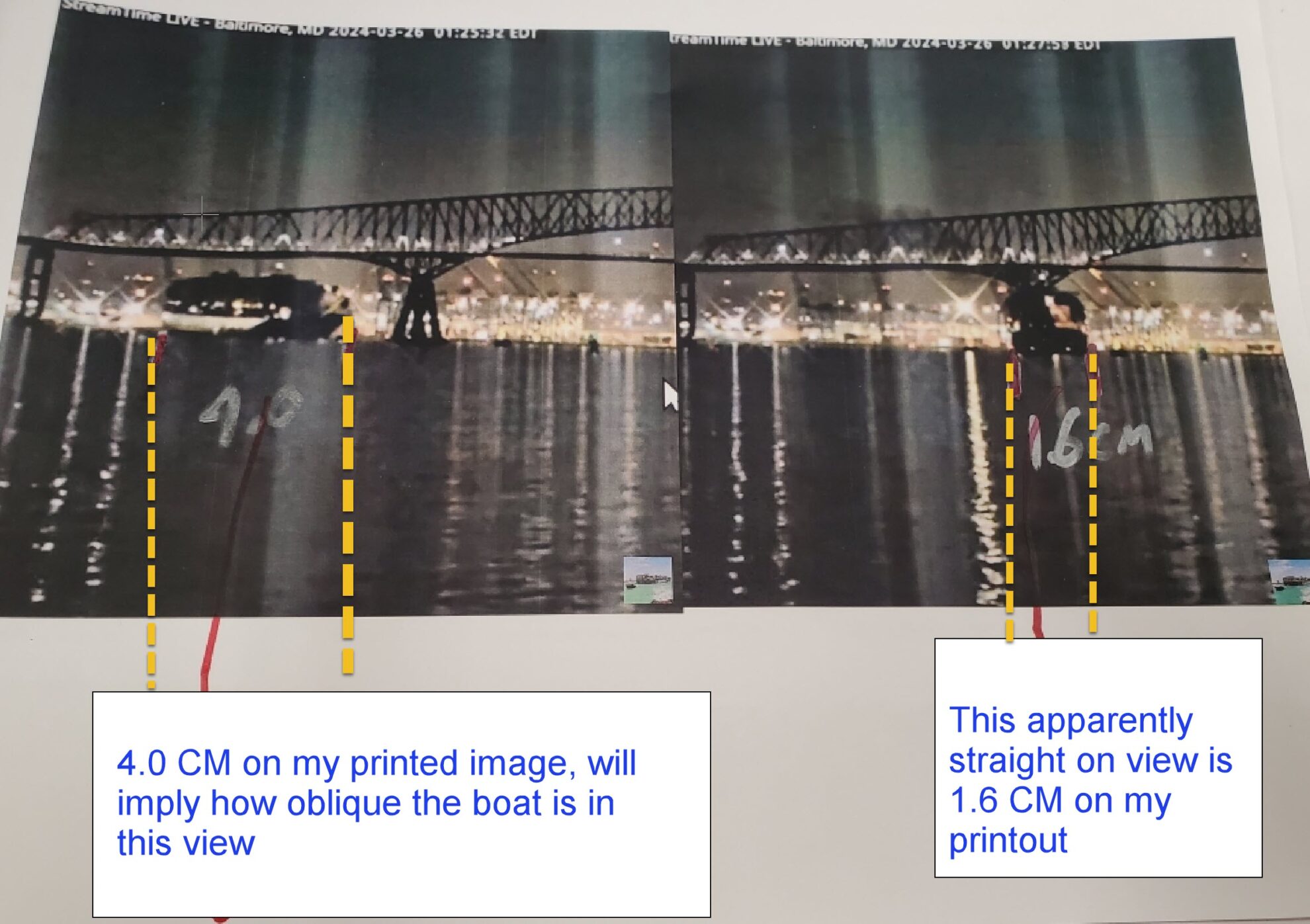I’ll address this in the next day or two, the timing and story are beyond any sense of credibility.
https://www.foxnews.com/world/australian-bystander-disarms-mass-shooter-australia-hanukkah-attack

I’ll address this in the next day or two, the timing and story are beyond any sense of credibility.
https://www.foxnews.com/world/australian-bystander-disarms-mass-shooter-australia-hanukkah-attack

stock here: I prefer to create the news, the statistics. Often no time to do so. But I saw this lie. And did the math.
———————
————————
You are asking for the fraction of the total pregnant population who:
That is simply: Prevalence×False-negative rate\text{Prevalence} \times \text{False-negative rate}Prevalence×False-negative rate
0.003×0.002=0.0000060.003 \times 0.002 = 0.0000060.003×0.002=0.000006
Under your stated assumptions:
This number reflects test-performance risk only, assuming:
In real-world public health, additional cases can arise from:
But purely mathematically, your conclusion is correct given the stated premises.
stock here: I have never read his manifesto, and no time now. The commentator makes the assertion that young people refer to him as “Uncle Ted”. Apparently this is true in very limited far right circles. But it is not widely used among young people.
What is curious is that Kazinski was part of the MK ultra experiements. He was abused.
——————————————-
See the 20 point summary below.
1. The video re-examines Ted Kaczynski (the Unabomber) as a historical figure whose critique of industrial society has gained new attention among disaffected young men, where he is often referred to as ‘Uncle Ted’.
2. Kaczynski is portrayed as a prodigy: a Chicago-born Polish-American with an IQ around 167, who entered Harvard at 15 and initially planned an academic career in mathematics.
3. While at Harvard, Kaczynski was subjected to Project MK Ultra–style psychological experiments in which government agents aggressively attacked his worldview, an experience the narrator reads as severe, likely unacknowledged trauma (PTSD).
4. The narrator argues that labeling Kaczynski schizophrenic served to delegitimize his ideas; he sees no clear signs of schizophrenia in Kaczynski’s writing or behavior and notes that Kaczynski refused to plead insanity to protect the perceived seriousness of his manifesto.
5. Kaczynski is credited with original mathematical work understood by only a handful of specialists, reinforcing the idea that he was not merely an unhinged criminal but a highly capable intellectual.
6. A key concept attributed to Kaczynski is that modern life is dominated by ‘surrogates’—substitutes for real human experiences—such as junk food for real food, social media for real community, and video games for real adventure or combat.
7. The central thesis of his social critique is ‘oversocialization’: modern industrial society becomes a complex machine that forces humans to behave like standardized cogs, suppressing the instincts and relationships that historically made life meaningful.
8. The video contrasts pre‑industrial family and community structures—where work, kinship, religion, and local economy were deeply intertwined—with modern life, in which work, childcare, and social support are outsourced to large bureaucratic institutions.
9. Industrialization, urbanization, and the rise of large firms replaced family-based economic units, weakened extended kin networks, and shifted dependence from family and community to impersonal employers and the state.
10. Modern schooling is described as a system explicitly designed to produce compliant industrial workers: teaching punctuality, endurance, obedience, and rote processing rather than useful knowledge or wisdom.
11. Using Norbert Elias and other historiography, the narrator argues that as societies grow more complex and interconnected, they demand stricter self‑control, privacy, and behavioral standardization—another facet of oversocialization.
12. Despite enormous material progress (food, medicine, transport, entertainment, climate control), the narrator claims modern societies are spiritually and psychologically sick; wealth beyond basic needs contributes little to happiness compared with relationships, community, and religion.
13. The video criticizes contemporary left‑wing politics as, in part, a maladaptive response to oversocialization: a resentful desire for total control over society, combined with demands for boundless personal liberation and the destruction of inherited norms and institutions.
14. Kaczynski’s analysis is said to foreshadow trends like collapsing birth rates, rising mental illness, social nihilism, and what the narrator describes as a civilizational ‘suicidal’ impulse in long‑industrialized regions such as Northwestern Europe and the U.S. Northeast.
15. Kaczynski envisioned two main futures for industrial civilization: (1) a chaotic collapse driven by the psychological and social pressures of modernity, and/or (2) an engineered future where genetic modification, AI, and technocracy reshape humans into compliant, hive‑like beings.
16. The second scenario—where genetic engineering and behavioral technologies gradually remove dissent, depression, and ‘problematic’ traits—is likened to a mix of ‘Brave New World’ and ‘1984’, erasing the inner human soul that resists tyranny.
17. The narrator condemns Kaczynski’s terrorism as immoral and strategically counterproductive, arguing that attacking technologists only delegitimizes the anti‑industrial critique because most people are deeply attached to technological conveniences.
18. At the same time, he contends that Kaczynski ‘won’ in a limited sense: the manifesto is now widely read, his ideas circulate broadly, and he may have influenced how some people frame the coming 21st‑century crises.
19. The rise of the internet is presented as a wild‑card development that Kaczynski could not fully foresee: it can both centralize surveillance and control, or decentralize power by enabling gig work, self‑employment, alternative education, and parallel institutions.
20. The video closes by urging viewers to consciously preserve human individuality and the ‘soul’ in the face of technocratic pressures, use tools like encryption and privacy‑preserving tech to resist digital authoritarianism, and treat the current era’s turmoil as a call to live more intensely and purposefully rather than succumb to nihilism.
stock here: Western Journal is like Shaun Hannity…when the big lies need to be told, spun, faked….they will do it for the leftists that pay them.
My spidey sense kicked off, when they had Erika “dropping truth bombs”.
You be the judge and chime in, spread the word. The controlled oppositions are the most dangerous to the cause of truth, safety, security, honesty, non-censorship.
No one gives a fuck about his burial site, and why would they?
Uh, Erika, you don’t have babies anymore, you have toddler/children.
And look at the varying video quality….really weird, just that is some type of psychological operation…..and the goth eyes….

“But here’s my breaking point on that,” she continued. “Come after me, call me names — I don’t care. Call me what you want, go down that rabbit hole, whatever. But when you go after my family, my Turning Point USA family, my Charlie Kirk Show family, when you go after the people that I love, and you’re making hundreds and thousands of dollars every single episode, going after the people that I love because somehow they’re in on this … No!”
Kirk appeared to be referring to podcasters like Candace Owens.
Faulkner responded, “I have to say it. I’ve never seen you like this.”
“This is righteous anger, because this is not OK. It’s not healthy. This is a mind virus,” Kirk answered, regarding the conspiracy theories.
“Just know that your words are very powerful, and we are human,” she added.
stock here: this is a massive story, never told anywhere in our history books. In fact, our schools taught us so poorly, that it took decades for me to understand that WW2 was not one big war, but 2 separate wars, and even that may be understating reality.
Did the nuclear bombs end the war with Japan? Perhaps, but just prior to that, Russia had wiped out 1M Japanese soldiers, killing them at a 30 to 1 ratio, in a mind numbing 11 day blitz. Check it out.
stock here, another H/T to the Cuttlefish, LOL and remember Rocky The Dog? This is a multi part long read, maybe print it for some suntan reading.
https://www.rockythedog.net/spooky/disasters3.html
While researchers might think that America’s ousting by overt and covert means Slobodan Milosevic, the Taliban, and Saddam Hussein from power, smashing their regimes, and punishing countries like Iran, Turkey, Russia and North Korea which had tried to help them or exploit their difficulties would be the sum total of what was available to it, they would be wrong. Washington used not only land and space weapons against them but also undersea ones to make the terrible earthquake on December 26, 2004 which caused the deadly tsumanis which devastated the Muslim countries, lying around the Indian Ocean, in the hope of preventing them in any way from joining radical Islam in its growing fight against the West.
The origin of the new weapons was the result of continuing inter-service rivalry plaguing the Pentagon, especially that between the National Reconnaissance Office’s satellities and the US Navy, particularly its attack submarines – what just continued to rise despite the end of the Cold War with the Soviets. While all the services had had to reduce their numbers, close bases, settle for less money, find more effective weapons systems, and seek more relevant missions, the bloated Navy – thanks particularly to Reagan Navy Secretary John Lehman, Jr.’s wild amibition to control the seas by a 600-ship fleet – had the hardest time adjusting to the new situation since the new threats were based on land, and were only using the skies to spread their alleged missions. The US Navy seemed to be without a serious mission, now that freedom of the seas had been secured.
It was in this context that Chief of Naval Operations Admiral Vernon Clark took control of the service in July 2000, setting a task force on the dangerous mission of trailing the Kursk to show Secretary of Defense William Cohen that the Navy was still able to take it to the enemy – what resulted in the USS Toledo sinking the Soviet sub when the USS Memphis crashed into it from behind. While the disaster cost the USA dearly – President Clinton having to forget about the $10 billion debt that Putin’s Russian owed Washington – it was still seen by the gung-ho sailors as a great victory, though commanding officers of ships were increasingly screwing up in other missions, resulting in their losing it, because of the strain.
In the Toledo’s case, the crew boasted about its achievement in cryptic ways despite the risks it took in doing so. The sub’s seaman claimed that it was the best attack submarine in the Atlantic fleet though it had only arrived in 1985, and failed to be even mentioned in Sherry Sontag’s and Christopher Drew’s Blind Man’a Bluff: The Untold Story of American Espionage. In scanning their Appendix C, dealing with submarine awards from 1958 through 1998 (pp. 415-35), there is no mention of the USS Toledo.
Torpedo man Todd Grace aka Toredo still boasted about being the last on board during the “Northern Run” which, it seems, caused the disaster. Toredoes are shipworms noted for their ability to sink unsuspecting wooden ships, and Grace, along with his boss, sorely missed “Big Al”, had done the same to its steel counterparts with the latest version of the MK-48 torpedo when the Toledo thought that the Kursk was going to sink the Memphis after it collided with the Russian monster.
Actually, the USS Parche – the most rewarded attack submarine in the Atlantic Fleet – had won yet another Presidential Unit Citation (PUC) in the last year of the listing. It won eight in all, plus other lesser awards. The Parche – in Operation Ivy Bells at the beginning of March 1986 for which it received its fifth PUC – had bugged the same Soviet naval base in anticipation of Moscow being caught completely by surprise by the assassassination of Sweden’s statsminister Olof Palme. It was because of the spying for the Soviets by the Agency’s Aldrich ‘Rick’ Ames, the Bureau’s Robert Hanssen and others that its bugging, and the growing presence of a horde of other American attack submarines came as no surprise to the Soviets.
Even the USS Memphis – which was badly damaged when the Kursk was sunk – received the Navy Unit Citation in 1981, and the Meritorious Unit Commendation three years later, and it must have gotten some recognition for its trouble with the Kursk, though, of course, nothing that the Navy could officially acknowledge.
These massive signs did not even exist in 2019, so they were planned before that and put up quickly. The government bought 90% of the radio time, and did 24/7 scary stories, with authoritarian overtones.
Marxist paradise indeed. Review. My guess is there is like 8 of these massive signs on Oahu. Zoom in.

stock here: good time to review Geography. Russia has taken Odessa, effectively landlocking Ukraine. See far bottom, Colonel Douglas Macgregor breaks it down, not sure he is totally a white hat.
Its funny the interviewer is clearly not on board with what he is hearing.


Odessa, in 2014 was Russian, and Ukranian Nazi’s burned the Russians in buildings, a recurring theme. Harkov is also a historically Russian city.

stock here, engineers and architects
stock here, let’s review, in light of the 7 Tower Fire.
stock here: I did some good work on this one, pulling truth out of a vacuum. From March 27th, 2024. If you search this website for “Baltimore Boat” you will find about 10 articles.
Baltimore Boat Debacle, Using Angularity Math, to Calculate the Turn Angle of the Boat
Not sure if I sent these, but using the actual boat dimension, and the straight on and oblique view, I calculate the ship made a 40 degree turn in a very short amount of time, although video may be sped up in parts.
I postulate that the only way this could happen this fast and tight is with a right handed screw, full engine reverse, AND the rudder thrown all the way also. These things don’t turn on a dime. The lights out could have been an intentional way of throwing all crew on the off track, whilst the 2 captains carried out the deadly “true” false flag that was immediately called out by everyone as “not an attack”.


This evidence is still available on YouTube
stock here: Something very odd has been happening to my posts. Videos posted in other articles are taking the place of the posted video. Time to back up the entire site. It may have something to do with a “new clipboard” in which more than just 1 item can be in the clipboard. But that doesn’t explain substitution.
So it looks like mass deaths of 1500 to 3000 are closer to reality.

stock here: HT Cuttlefish, who knew? South Korea has been horribly corrupt for decades, but not just that, controlled by cults that use the dragon as a symbol.
1961 – General Park Chung-hee leads a military coup; becomes de facto ruler.
1963 – Park Chung-hee is formally elected president; begins authoritarian modernization of South Korea.
1960s–70s – Park builds the chaebol system (Samsung, Hyundai, LG), giving them massive economic power.
1972 – Park enacts the Yushin Constitution, securing permanent dictatorial authority.
1974 – First Lady Yuk Young-soo (Park’s wife) is assassinated.
1974 – Cult leader Choi Tae-min approaches the grieving daughter Park Geun-hye, becomes her “spiritual guide.”
1974–1994 – Choi Tae-min and his family gain deep influence over Park; U.S. diplomats later call him a “Korean Rasputin.”
1979 – President Park Chung-hee is assassinated by the KCIA director, partly due to frustration with Choi Tae-min’s influence over the family.
1994 – Cult leader Choi Tae-min dies; his daughter Choi Soon-sil inherits his influence over Park Geun-hye.
2007 – A leaked U.S. embassy cable warns that if Park becomes president, the Choi family will control her “body and soul.”
2013 Feb – Park Geun-hye is elected South Korea’s 11th president—promising clean, transparent, corruption-free leadership.
Behind the scenes, Choi Soon-sil is already receiving confidential briefings and influencing decisions.
2014 Apr – The Sewol ferry disaster kills 304 people (mostly students).
Park’s administration allegedly pressures media to soften criticism of its response.
This period later becomes part of the corruption investigation.
Summer–Fall 2016 – Journalists discover hints of Choi Soon-sil’s involvement in presidential affairs.
Oct 2016 – JTBC reporters find Choi’s abandoned Samsung tablet in Germany.
It contains:
Oct 24, 2016 – Public revelation of the tablet.
Oct 25, 2016 – Park denies wrongdoing, then admits Choi “helped with speeches.”
Late Oct 2016 – Massive public protests begin—eventually millions gather weekly.
Nov–Dec 2016 – Parliament begins impeachment proceedings.
Dec 9, 2016 – National Assembly votes to impeach Park.
Mar 10, 2017 – The Constitutional Court unanimously upholds impeachment.
Park Geun-hye becomes the first president removed from office in Korean history.
2017–2018 – Trials reveal:
Apr 2018 – Park is sentenced to 24 years (later increased to 25).
2018 – Choi Soon-sil is sentenced to 3 years + later an additional 20 years.
Dec 24, 2021 – President Moon Jae-in unexpectedly pardons Park Geun-hye.
Mar 24, 2022 – Park is officially released from prison.
Moon says the pardon was meant to promote “national unity,” despite earlier promising not to pardon corruption convicts.
A dictator’s daughter shaped by a cult, elevated by chaebols, became president, governed through a secret power broker, fell in a historic corruption scandal, was imprisoned, and then pardoned in the name of unity.
stock here: I am glad I am not the only one to see this. This is Sabotage.

3 days ago
·
🏝️🚨💀 HAWAII IS DROWNING RIGHT NOW – While Leaders Pile On Taxes and Hunt for Someone to Sue #AlohaLost Hawaii is bleeding out – fast. 🌺 Tourism is in cardiac arrest.
Visitors are vanishing, crushed by insane prices and the feeling that aloha has been replaced by contempt. In 27 days, on January 1, 2026, the state will slam another “Green Fee” tax on every hotel, rental, and cruise passenger – pushing the total bite to 14% in some counties.
Cruise lines are already in federal court screaming it’s illegal. They’re right – it’s just the final shove off the cliff. 🏠 Residents are fleeing at the fastest rate in recorded history. Lifelong kama‘āina families are gone forever, priced out by housing that rivals Manhattan and power bills that belong in a horror film.
Yet the state keeps approving luxury towers with no water, no power, no schools, no plan. 💧 Aquifers are being sucked dry – Oahu’s demand jumps 26% by 2030 and we’re already in the red. ⚡️
The last coal plant is dead, oil is $150 a barrel, blackouts loom. 🌱 We import 90% of our food but keep bulldozing farmland. 🗑️ One landfill left on Oahu – full in ~7 years, no replacement site. 🏫 Classrooms are overflowing, teachers are bolting, 738 emergency hires barely keep schools open.
🩺 Doctors and nurses are leaving in droves – wait times for keiki now stretch months. Small businesses are corpses from the longest lockdowns in America – lockdowns Josh Green helped prolong.
Coca-Cola just announced it’s shutting its plant and walking away forever. And the leaders’ urgent response? Sue TikTok for “hurting kids’ brains” while quietly slashing $10 million from the only inpatient psych beds that keep those same kids alive.
Threaten the military’s leases. Fight cruise lines in court over a tax that will kill what’s left of tourism. This is not policy. This is sabotage.
Every day another family leaves. Every day another business dies. Every day the water drops, the grid strains, and the landfill fills. Hawaii is not “struggling.” Hawaii is sinking in real time – and the people at the helm are too busy filing lawsuits to throw a single lifeline. Wake up before there’s nothing left to save. #AlohaLost #HawaiiEmergency #GreenFeeKills #TourismDead #JoshGreenFail #SaveHawaiiNow #InfrastructureCollapse

Local publisher
·

The state of Hawaii is suing ByteDance Inc., the parent company of TikTok, alleging the largest social media company in the world exploits 1 billion users worldwide – more than 150 million in the U.S. alone, including a large number of children, by false marketing and promotion for economic gain.
2
stock here: h/t Flying Cuttlefish. I have been busy, I was aware of this, it was absurd on the first reports of 28 people dead. Now they are saying 159 dead. There were over 4000 people in those towers.
Like Lahaina, thousands are missing, and there is no list of those dead, so nothing can be corroborated. Lei does a good job of throwing out visual notes on her video, analyzing number and demographics. Within minutes, all 7 towers were engulfed. So that is obviously ARSON.
She covers a wide range of topics, many that were not even on my radar, have a visit.
https://www.youtube.com/@LeisRealTalk
She compares it to other widely known tower fires. Grundfeld, a single 24 story tower, had a 24% death rate. They are claiming 159 deaths out of 4000 or so. So say 6%. That does make no sense.
In this episode, Lei revisits the November 26 Hong Kong fire at the Hung Fu Court estate, where seven 31‑story residential towers burned almost simultaneously. While authorities report 159 dead and 31 missing, she argues this is physically, statistically, and historically impossible. Using Hong Kong census data, she estimates about 2,600 people were inside the seven towers when the blaze erupted, and compares this event to other major high‑rise fires that typically show mortality rates around 25–30%, not the 6% implied by the official toll.
She notes the rapid spread of the fire, failed alarms, sealed windows, and leaked firefighter accounts of many bodies on each floor, plus thousands of missing‑person posts, extra aid supplies being discarded, and the lack of an official victim list. Lei concludes that the real death toll is likely in the four‑figure range and that Chinese authorities are repeating a familiar pattern of minimizing casualties for political reasons, while some analysts even frame the disaster as part of a larger, superstitious ‘ritual’ by the regime.
Lei’s livestream focuses on the massive residential fire at Hong Kong’s Hung Fu Court on November 26, where seven of eight 31‑story towers caught fire in a level‑five disaster. Authorities claim 159 deaths and 31 people missing, but Lei argues that this figure is not simply suspicious, it is mathematically impossible.
Using the Hong Kong government’s 2021 census, she notes that Hung Fu Court housed about 4,643 residents, roughly 580 per tower. Seven towers burned, so about 4,060 residents lived in the affected buildings. Given the time of the fire—2:51 p.m. on a Wednesday—and the unusually high proportion of elderly residents, she estimates that about 58% of residents were home. After adding workers, caregivers, delivery people, and visitors, she calculates roughly 2,600 people were inside when the fire erupted.
She then looks at historic high‑rise fires: London’s Grenfell Tower (about 24% mortality), a 1995 Taipei high‑rise fire (31%), and a 2017 Brazilian apartment fire (33%). In extreme events, she says, mortality can range from 25–50%. Applying these rates to the estimated 2,600 people trapped in Hung Fu Court yields an expected death toll of 650–1,300 or more, not 159. Given Hung Fu Court’s flammable external foam, scaffolding nets that acted as fuel, total failure of fire alarms in eight towers, sealed windows, and rapid ‘chimney effect’ spread, she argues the true number should be at the high end of that range.
Lei bolsters this argument with circumstantial evidence: photos showing extreme destruction, reports of Hong Kong’s official ‘care team’ discarding large amounts of donated supplies they claimed were ‘not needed,’ and the fact that only about 2,000 of an estimated 5,000 displaced residents used government shelters. She points to thousands of missing‑person posts online versus authorities’ much smaller official missing count, and notes that, unusually, the government has not released a public list of the deceased—something that is standard in comparable disasters abroad.
Citing alleged firefighter leaks that there were five to ten bodies on many floors, Lei suggests real fatalities could reach 1,600–2,000. She frames this as part of a broader Chinese Communist Party pattern of under‑reporting casualties in disasters, referencing the 2008 Wenchuan earthquake and the 2021 Zhengzhou flood, where citizen investigations argued that real deaths far exceeded official numbers.
In the latter part of the stream, Lei discusses more speculative, metaphysical interpretations. A Chinese numerologist and feng‑shui (‘funray’) masters describe the seven burning towers as ‘seven incense pillars’ in a sacrificial ritual to prolong the regime’s life. She notes parallels to a Hong Kong film depicting seven of eight buildings burning, and ancient prophecies about a ‘white bird’ marking the end of a dynasty. She then ties in the recent death of a famous white crested ibis named Pingping at Beijing Zoo, whose name, color, and symbolism Chinese netizens link to Xi Jinping and see as an ominous sign.
Lei closes by answering audience questions on Daoism and feng‑shui, Hong Kong’s ‘snake‑shaped’ urban layouts, Taiwanese defense politics, and CCP elite power struggles, while also briefly promoting her gift guide and eye‑care patches. The core message of the episode is that the Hung Fu Court fire is almost certainly far more deadly than the official narrative admits and that both political calculation and deep superstition shape how China’s rulers respond to such tragedies.
Hello everyone. Hi. Welcome to Lays Real Talk. Welcome to Lay’s Saturday Night Live. I talked about Hong Kong’s fire last Saturday. So, it’s been a week. Someone asked me about whether the fire was arson, and I said I didn’t have enough information to tell you what it was about.
And it took me a week to believe what I’m going to tell you today. Imagine this. It’s a quiet Wednesday afternoon. Then suddenly seven 31‑story towers erupt into flames almost simultaneously. Residents have less than 5 minutes to escape. The smoke climbs like a black tornado and the fire spreads faster than anything we’ve seen in Hong Kong’s history. But what comes next is even more chilling: an official death toll that defies physics, thousands of missing‑people posts neglected, and a government refusing to publish a victim list, while a population asks one forbidden question: where are the missing thousands?
The fire erupted on the afternoon of November 26 and, according to the authorities, at least 159 people were killed and 31 people are still missing. The moment people heard that seven buildings caught fire at the same time, suspicion exploded. That kind of synchronized blaze is almost unheard of, so some people claim this is arson with ill intention. Lei says she will explain that theory later.
The fire itself was tragic, but the way the Hong Kong government handled it was, in her view, even more tragic. She shows images of memorial messages posted by students at Hong Kong Baptist University calling on the government to address public concerns. The school quickly covered the wall with boards, and when the student union reposted the messages on December 4th, the school made them stop again. Lei asks: what exactly is the government trying to hide? Many believe it is the real number of deaths.
Officially, the government claims 159 dead and 31 missing, but many people, including Lei, do not believe this number. From a physical or statistical perspective, she argues the figure is not just suspicious—it is impossible. She calls it a number invented to cover up corruption, systemic failure, or something possibly more sinister. Post‑disaster photos show charred bodies, melted structures, and devastation, which explains why so many question the official toll.
Because of the doubts, Hong Kong residents conducted independent analyses. One estimate puts the real death toll as high as 1,300, and Lei believes even that may be conservative. Some suggest 2,000 people are unaccounted for and that real casualties are ten times the official figure. She promises to walk viewers through the reasoning so they can judge for themselves.
Lei recaps the event: a rare, extreme disaster spanning seven 31‑story residential towers, classified as a level‑five fire (the highest level). The buildings were wrapped in flammable window‑sealing foam covered by so‑called safety nets that actually fed the flames. Crucially, every fire alarm in the eight towers failed, creating a “chimney effect” as flames shot upward. Residents on upper floors had almost no chance to escape.
A Hong Kong resident used 2021 census data to calculate the affected population. Hung Fu Court housed 4,643 residents, averaging about 580 per tower. Seven of eight towers burned, so roughly 4,060 residents lived in the affected buildings. To estimate casualties, one must know how many people were on site at the time and what mortality rates high‑rise fires historically produce.
The fire started at 2:51 p.m. on a Wednesday. The population was older than average: elderly residents comprised about 40% of the total and Lei estimates that over 90% of them would be home at that hour. Children under 18 represented 10% of the population, with about 60% home since many had already returned from school. Working residents were about 30% of the population, with perhaps 20% home (remote workers). The remaining 20% were homemakers and adult students; she estimates that 50–55% were home. Weighing these groups together, she gets an overall “at‑home” rate of about 58%, higher than normal due to the large elderly population.
Doing the math, she estimates around 2,366 residents were physically in the buildings when the fire began. Adding approximately 250 renovation workers, caregivers, nannies, delivery workers, social workers, and visitors, she arrives at roughly 2,600 people on site when the fire erupted.
Because the estate was under long‑term construction, windows were sealed and fire alarms in all eight towers failed. Many residents did not know a fire had started. The fire did not begin from a single point; it ignited on multiple floors and in multiple buildings nearly simultaneously. Some observers claim that after firefighters arrived at the first burning building, fires suddenly broke out in the other towers, including those further away, in directions that did not match how wind‑driven spread would normally work. This leads some to suspect arson, or at least multiple separate ignition points.
Within minutes, all seven buildings were engulfed. Vertical escape routes filled with thick smoke, and Lei says residents above the 15th floor had almost zero chance of survival. Now she tests the official number. If 2,616 people (using her rounded figure) were inside the towers and 158 died (using one of the official tallies mentioned), the implied mortality rate is about 6%. She compares this to well‑known high‑rise fires: London’s Grenfell Tower in 2017 had about 300 residents exposed and 72 deaths, a mortality rate of 24%. Grenfell was one 24‑story tower. Hung Fu Court was seven 31‑story towers, with worse building materials, faster spread, failed alarms, sealed windows, and scaffolding nets acting as fuel. Lei argues there is “no way in the universe” that Hong Kong’s mortality rate is only 6%; it should be higher than Grenfell’s.
She adds more examples: a 1995 fire at a 13‑story building in Taipei with a 31% mortality rate, and a 2017 apartment fire in Brazil (Valparaíso/Varaso) with a 33% rate. Across history, she says, extreme high‑rise fires cluster around a median mortality rate of 30%, with a conservative low bound of 25% and an upper bound of 50%. Applying these to the Hung Fu Court estimate of 2,600 people trapped, a 30% rate would mean 784 deaths. A 50% rate would mean about 1,300 deaths. Given Hung Fu Court’s conditions, she believes the real number is closer to the high end, and even that may be optimistic, because it assumes half the trapped residents survived a days‑long inferno.
She then points to corroborating signs that many more people were lost. In a Hong Kong Facebook group, people reported that the government’s official “care team” threw away large volumes of donated supplies, claiming “no one needed them” and that the items were “garbage.” Lei finds this implausible, arguing that donors do not send trash and that the more likely explanation is that there were not enough survivors left to use the supplies. If the pre‑fire population of the eight towers was around 5,000 (counting nannies, caregivers, and others beyond the 4,643 census figure), but only about 2,000 people used government shelters, then roughly 3,000 people are “missing” in the sense of not being in shelters or clearly relocated. In cramped Hong Kong, she doubts thousands could all simply move in with relatives or check into hotels on their own dime.
Hong Kong’s major newspaper Ta Kung Pao (she pronounces it “Taongo”) reportedly wrote that residents of the eight towers held 7,600 life insurance policies, implying an occupancy higher than official population figures. Lei infers that if the base population is larger, her earlier estimate of 2,600 people on site is actually low, meaning casualty estimates should be even higher.
She notes that thousands of missing‑person posts appeared online after the fire, with families looking for loved ones. She asks how authorities could narrow the official missing number to 31 when so many people were searching for relatives and friends. She wonders whether all these families have truly been reunited. Most damning, she argues, is that more than a week later the government still had not published a list of the deceased—contrary to international norms. She contrasts this with the 2021 Miami condo collapse, where U.S. authorities released detailed victim and survivor lists by floor and unit.
Lei cites anonymous firefighter accounts claiming there were at least five to ten bodies on each floor of some buildings. If even five people died on each of 31 floors in seven buildings, that would imply around 1,600 deaths; if ten per floor, more than 3,000 deaths. She concludes that, combining statistical analysis, eyewitness claims, missing‑person posts, shelter counts, and insurance data, roughly 2,000 people may have died and that the official figure of 158 is “physically, statistically, historically, and logically impossible.”
She then situates the fire within a larger pattern of Chinese Communist Party (CCP) disaster cover‑ups. She mentions the 2008 Wenchuan earthquake, where the government reported around 70,000 deaths but citizen investigators believed the real number approached 300,000, including tens of thousands of students killed in substandard schools. Writer Tan Zuoren, who documented victims and criticized “tofu‑dregs” construction, was jailed. She also recalls the 2021 Zhengzhou flood, in which an urban tunnel filled quickly with thousands of vehicles; official figures reported under 4,000 dead and missing combined, but some estimated 20,000–30,000 fatalities. Lei argues that in China, death tolls are political, not factual, and sees the Hong Kong fire as fitting that pattern.
The final third of the talk shifts into metaphysical and symbolic territory. Lei discusses a numerologist in London, Miss Zhang Ying, who uses Zi Wei Dou Shu (Purple Star astrology) to analyze the event and concludes it was not an accident but a ritual—seven “incense pillars” offered to extend the life or power of a political regime. The seven burning towers are likened to seven giant sticks of incense. She notes that British psychic Craig Hamilton-Parker had earlier predicted a politically motivated multi‑building fire in Hong Kong. A feng‑shui (funray) master also spoke of geomantic structures involving “nine dragons” and “seven incense pillars” and warned of a “great golden dragon formation.”
She points out an eerie coincidence: the Hong Kong film “City on Fire,” starring Andy Lau, depicted seven of eight buildings burning simultaneously, mirroring Hung Fu Court’s seven of eight towers. The movie was released around the time scaffolding went up at the estate, and although the scene is brief, some viewers find the parallel unsettling. According to Miss Zhang, firefighters initially arrived when only one tower was burning, but as they focused on it, six more towers quickly caught fire. Each was separated by at least ten meters, too far for sparks to leap across under normal conditions. Videos allegedly show fires starting on the sides of buildings farthest from the original blaze, fueling the arson theory.
Lei asks why exactly seven buildings burned and not eight. She quotes Daoist incense‑offering rules that emphasize odd numbers; seven is said to be the maximum incense number in the “human realm,” representing a plea to reverse life, death, and destiny. In this reading, the seven towers became seven sacrificial pillars meant to extend the regime’s longevity. She also relays Zhang’s claim that the official who arranged the ritual betrayed his superior—supposedly Xi Jinping—by siphoning off the “benefit” of the ritual for himself while leaving Xi to bear its karmic consequences. Zhang suggests that Xi’s own chief of staff may be involved.
Lei ties this to a broader “funray” analysis of Hong Kong as a dangerous place physically, politically, and spiritually, with snake‑shaped urban designs that she believes drain good energy from Hong Kong and redirect it north toward Beijing. She says only the CCP‑approved Hong Kong government can approve such designs.
She then introduces another powerful symbol: the death of a white crested ibis named Pingping at Beijing Zoo on December 1. The zoo posted a long, emotional obituary for the bird, which died at almost 40 years old. Chinese netizens immediately drew parallels to Xi Jinping, seeing the obituary as an omen. Lei lists six connections: the bird’s name Pingping echoes Xi’s given name; it came from Shaanxi, Xi’s ancestral province; it is a white bird, and Xi’s surname in traditional form incorporates the characters for “white” and “feather,” leading some to joke that he is a “white feather bird”; the ibis has a red crown and red feet, symbolizing the red regime; Pingping lived roughly the equivalent of 120–150 human years, reminiscent of Xi’s earlier comment to Putin about wanting to live to 150; and the bird’s keeper is surnamed Mao, the same as Mao Zedong, whom Xi emulates. Netizens therefore read “Pingping’s” death under “Mao’s” care as a sign foreshadowing Xi’s downfall.
Because Xi’s name and likeness are heavily censored online, Chinese citizens use such coded symbols and euphemisms to discuss him. Lei says that while speech can be censored, fate and omens cannot. She notes that many people celebrated the passing of the white bird not out of hatred for the animal but because of what it represents. She also cites an ancient prophetic text (often called “Tui Bei Tu,” though she pronounces it differently) that describes five birds crossing mountain peaks, four black and one white, with the white bird dying after striking the mountain. Many now associate this “fifth white bird” with Xi Jinping, China’s fifth CCP leader, and see the Hong Kong fire plus Pingping’s death as signs pointing toward a regime in trouble.
In the closing Q&A, Lei fields questions about Daoism. She argues that genuine Daoist cultivation is solitary and not meant to form an organized religion like Buddhism. She distinguishes higher‑level spiritual practice from lower‑level Daoist “techniques” such as feng‑shui, fortune‑telling, and ritual magic, which she views as worldly and sometimes evil because they can channel harmful energies. She also briefly answers questions about Taiwan politics, Xi‑faction corruption cases, her newsletter plans, duck recipes, and her Christmas gift guide—especially herbal eye patches for eye strain and early cataracts.
The stream ends with Lei reiterating that the casualties in Hong Kong are likely far higher than admitted, that the city has become dangerous on multiple levels, and that omens—from fire to birds—are fueling widespread speculation about the CCP’s and Xi Jinping’s future.
stock here: on Facebook, stories are spread that this airplane was present in Maui. I don’t know how to do the historical research, if it even can be done.
https://www.airnavradar.com/data/flights/ARSON1

stock here: people spend a lot of time watching this flight radar
https://www.airnavradar.com/@21.99216,-154.36854,z6

stock here: Are You Content? SSRI use has skyrocketed. They are manipulating our Dopamine and our Seratonin, among other things.
We are well on the way to this Dystopian Nightmare. The Satanists would support it all the way. To destroy God’s creation, to alter the DNA, to wipe out emotions and resistance. What say you? Could they put it in the water?
From the Weinstein Company


stock here, my idea, but A-Eye frames it with some original ideas.
Check latest news, and related to Ron Johnson and Rand Paul.
Then consider this, sound bite and below, further explanation.
—————————————–
Republicans always promised to replace Obamacare.
Rand Paul’s new plan actually could—not by spending more money, but by unleashing buying power.
Here’s the real play:
But here’s the part nobody sees:
It looks like reform.
It might actually be the quiet revolution of U.S. healthcare power.
—————————————–
For years, Republicans said they would repeal and replace Obamacare.
Nobody believed them anymore—until an old idea resurfaced with a new twist.
Rand Paul’s “Health Marketplace and Savings Accounts for All Act” sounds boring on the surface.
It’s not.
Underneath the legislative language is a structural shift big enough to reroute the entire healthcare economy.
Washington thinks this is just about lowering premiums.
That’s the distraction.
The real story is about who ends up controlling healthcare in America.
Obamacare subsidies exploded:
Everyone knows this is unsustainable.
But the political class has only one tool: throw more money at insurers and pretend that’s “helping families.”
It’s a blank check with no price discipline.
And yes—when you feed the insurance industry taxpayer cash without limits, they eat without limits.
Sen. Paul says:
On paper, this is market reform.
In practice, it’s far bigger.
This doesn’t just lower premiums.
It shifts power.
If giant corporations can legally pool millions of members and negotiate their own insurance plans, something massive happens:
The center of American healthcare power moves away from Washington and into the hands of five or six megacorporations.
Think about it:
Once they negotiate insurance for millions, they don’t just bargain for lower rates—they dictate them.
This is a corporate version of a national health system…
created without ever calling it one.
Politicians call it “market forces.”
It might actually be the largest consolidation of health authority in U.S. history.
Letting HSAs pay premiums is the quiet nuclear bomb in the bill.
Once people can:
…suddenly, the insurance companies lose their grip on the payment system.
Why?
Because a tax-free spending account changes patient behavior:
It’s not deregulation—it’s evaporation of the old model.
Traditional insurance becomes a dinosaur overnight.
All because Congress tweaks the tax code.
Here’s the big question elites never want to answer:
Who benefits when the government loosens control but corporations tighten theirs?
If Amazon runs your doctor’s office…
If Costco negotiates your premiums…
If Walmart controls your primary care…
If CVS owns your pharmacy + urgent care…
Is that market freedom, or is that just a different flavor of centralization?
Here’s the conspiracy twist:
Washington insiders know that federal healthcare programs are fiscally doomed.
They need a lifeboat.
Corporate-led care is the only structure big enough to absorb the collapse if subsidies shrink or debt pressures hit.
This isn’t “Repeal and Replace.”
This is Prepare and Transfer.
Transfer control from government → corporations.
Transfer payment structure from insurance → HSAs.
Transfer power from public policy → private networks.
The public thinks it’s about premiums.
The elites think it’s about stability of the system when the debt bomb eventually hits.
Rand Paul’s plan isn’t just a reform.
It’s a pivot point.
But beneath the surface, two massive shifts unfold:
This is not repeal.
This is not replace.
This is a controlled demolition of the old model—and a migration to a new one.
Whether that future is better or worse depends on who you trust more:
stock here, she is Board Certified